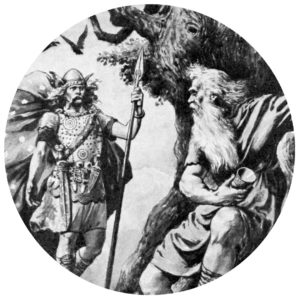There are many qualities to Odin that make him an outstanding character in the northern Germanic Pantheon
There are many qualities to Odin that make him an outstanding character in the northern Germanic Pantheon. If we choose to understand his special position, and how he acquired his shaman-like skills, it is important to consider the other mythological motifs that his presence is embedded in.
The world-tree Yggdrasil, for example, as a circumpolar motif of the arctic and sub-arctic regions. It exists across circumpolar societies of the north and ultimately derives from a late Paleolithic hunter-gatherer cosmology (e.g. Hultkrantz, 1996). Without the world-tree, a shaman can not journey the Otherworlds, nor can he or she mediate and negotiate with the forces of beyond.
The British scholar Hilda Davidsson emphasized that Norse mythology, in fact, shares many parallels and motifs with indigenous societies from Siberia. Indeed, Odin appears and functions as a mediator. His horse Sleipnir is used to travel Yggdrasil and its worlds.
Likewise, he is able to shapeshift and and he can call upon his animal-helpers Huginn and Munnin in order to gain knowledge and information via shamanic-like means. Odin himself, along with Freya, practiced Seiðr – the practice itself has been investigated by many scholars such as Neil Price. Seiðr as a type of magic shows striking similarities with the Noaidi-shamans in the mythic-ritual complex of the Sami.
Who is Odin?

In continental Europe he is known as the hunter behind the motif of the ‘wild hunt’ and likewise as a ‘wild man’ (see e.g. Wilhelm Mannhardt’s studies). The hunt itself has an incredible importance to the practice of shamans and healers in the northern hemisphere.
The hunter possessed the ability to shapeshift and communicate with an animal-ancestor, where a transfer of knowledge took place and shamanism emerged as the ability to communicate with what Anthropologist A. Irving Hallowell coined ‘other-than-human persons’ in the 1960’s. His role in the hunt, the shamanic-like qualities make it plausible that his former self was in some way related to the ‘Master of Game’ motif.




